Ipomoea purpurea
The common morning glory is an easy-to-grow ornamental flower that’s tolerant of a variety of conditions, a voracious grower that opens its blooms wide in the morning only to wilt by the afternoon.
Requiring little care, it’s the annual groundcover and trellis plant of choice for gardeners everywhere.
We’ll take a look at where the morning glory comes from and take a gander at its history in horticulture. But more importantly, we’ll learn what it takes to grow morning glory well, so that it’s at its best.

We link to vendors to help you find relevant products. If you buy from one of our links, we may earn a commission.
Here’s what’s to come in this article:
How to Grow Common Morning Glory
But first, a little note.
The common name “morning glory” is thrown around to describe various plants in the Convolvulaceae family, a broad group that includes moon flowers (I. alba) and others. The Ipomoea genus has more than 500 species under its umbrella, and these are most often grown as annuals.
This article will be looking specifically at I. purpurea and not the other varieties of morning glories. But don’t worry, faithful readers, we’ll be covering those species in future material!
An Icon for Artists and Writers
The image of the morning glory is represented in famous works of painting and sculpture across the world by Georgia O’Keeffe, Sopheap Pich, Suzuki Kiitsu, and others. It is also a regular reference in poetry, literature, and folklore.
The Chinese have a tale of two lovers who spent all of their time together and spurned their chores until the work piled up around them. They were punished and forced to work, allowed to see each other but once a year. In this story, a morning glory represents this brief period of time for two lovers to spend together.

Christian tradition suggests the short life of a morning glory flower represents the finite amount of time we have in the world, and in Victorian times the morning glory stood for a love that never ends… or one that goes unrequited, often decorating headstones.
Man, this flower has some bittersweet themes going on, huh?
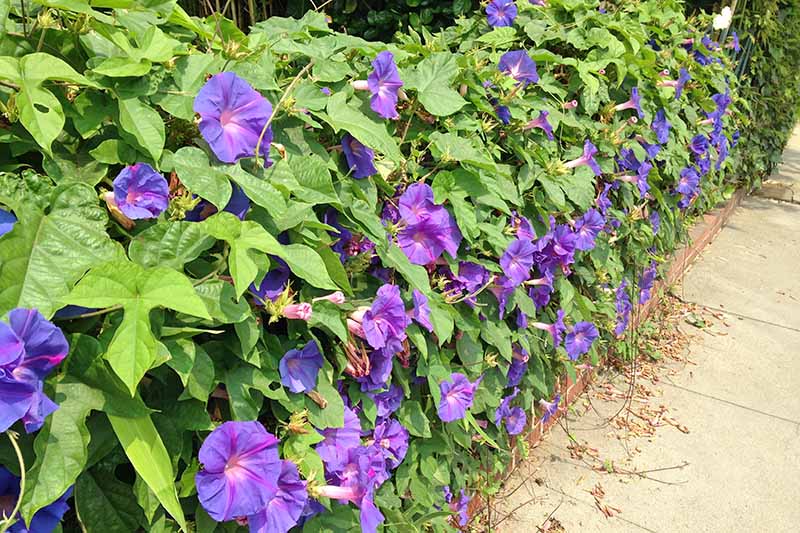
Don’t worry, Walt Whitman says, “A morning-glory at my window satisfies me more than the metaphysics of books,” and philosopher Alan Watts opines, “The morning glory which blooms for an hour differs not at heart from a giant pine that lives for a thousand years.”
That lightens things up a bit.
Medicinal and Ritual Use
The morning glory has been used as a laxative in Asian and Mesoamerican countries for centuries, and a tea was sometimes concocted from its roots as a diuretic and expectorant. Tea brewed from the dry leaves has been used by herbal healers to treat headaches, too.
Seeds from the morning glory have been consumed as a hallucinogenic substance because of a compound called LSA (similar to LSD). Mesoamerican indians would imbibe these seeds to enter trances and altered states for ritualistic purposes.

The seeds are toxic, however, and can cause serious health problems when consumed. They are often also coated with agricultural chemicals. Do not eat them.
Growing Conditions: A Flower That Can Take It All
So it’s true that various species of I. purpurea can grow in just about any soil type, and it looks like it thrives in poor soil types. Heck, it seems to flower more often in poor soil than well-drained, loamy soil. So what’s going on?
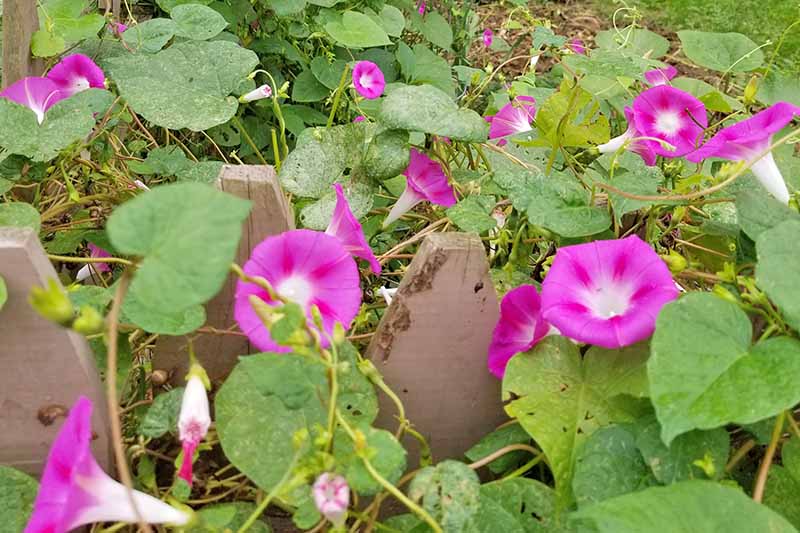
Many plants will produce an abundance of flowers not when they’re happy, but when they’re stressed and trying their best to reproduce before they kick the bucket. That morning glory growing on the side of the old iron works isn’t flowering because it’s happy, it’s flowering because it’s struggling to ensure it leaves another generation to pick up where it couldn’t survive.
Because I. purpurea can grow in almost any soil condition, it leads many gardeners to suspect that it doesn’t need to be fertilized. That’s not exactly true; when grown in the right conditions, a morning glory thrives with a monthly fertilizer (as the package directs). Most often a 10-10-10 balance will work, granular or liquid.
Under certain conditions, these plants will refuse to bloom. We have a troubleshooting guide for that.
Endless Light: I. Purpurea Thrives in Full Sun
I. purpurea thrives in the sunniest conditions. This adoration of sunshine is what makes morning glory such an ideal plant for trellises, arbors, fences, and walls. It’s often grown in hot and open locations specifically to provide ample shade via its dense growth.
It can also grow up along the side of a building and offers some drastic improvements in your cooling bill, all while providing seemingly non-stop flowers from May through September.
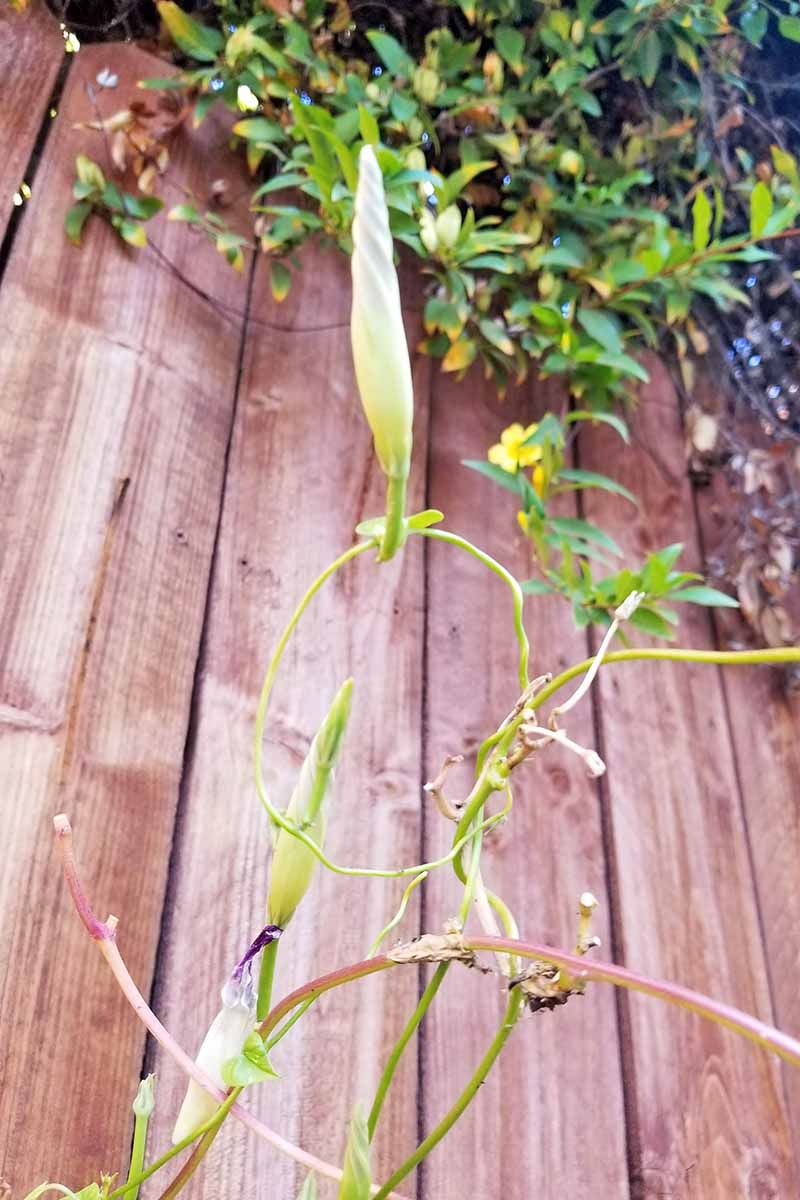
Unlike ivy and other vines, morning glories do not grow roots for climbing. To encourage these vines to cover the side of a structure, you’ll need a trellis or lattice for them to climb.
On the one hand, you won’t need to worry about morning glories damaging the walls of your structure! But on the other, a support system for the vines is required and will need to be cleaned at the end of each season.
That many twisting, crawling vines can be extremely difficult to entirely clean up year after year, but it sure does look nice when it’s in bloom!
The name “morning glory” references how the flowers of this plant will open fully in the morning sun.
“Glory” is an understatement, when this plant is thriving and the weather is on its side. But those blooms are sensitive, and will begin to wither by the time the hot afternoon sun starts to really beat down.

Annual or Perennial?
I. purpurea can tolerate about as much sun as you can throw at it, but it’s most often grown as an aggressively self-seeding annual, to the degree that it seems like it’s a perennial in warm locales. When the flowers take on a crispy brown, brittle texture, the seeds are ready to pop and they get to work establishing themselves for next year.
The meticulous gardener can remove each flower after it blooms to prevent unwanted spread, but a thorough cleanup in the fall followed by attentive weeding in the springtime will keep unwanted plants from sprouting up.
However, if you’ve got an area you want covered without additional planting and effort, this is the plant for you; it will rapidly cover whatever it grows on, whether that’s a flat surface or a vertical one such as a trellis or fence. You can also collect the seeds for sowing in different locations.

Annual vines can simply be ripped off the fence at the end of the season, but perennials should be allowed to stay in place throughout the winter. In the springtime you can cut back the burnt-off growth and watch it spring back to life again.
I’ve had a few plants that were left to overgrow for a few years too long and these became massive, tangled blankets of vine. A heavier pruning, leaving perhaps thirty or forty percent of the plant material remaining, is the solution for this heavy overgrowth.
This tendency to spread and grow without borders, so much so that it is a known invasive species and illegal to plant in the state of Arizona, can be a problem for some gardeners. If you’re planting some of these babies, make sure the plant doesn’t invade your neighbor’s yard or any wild spaces nearby!
Planting Tips
You can find established plants and plant them right away, but morning glory is such a vigorous grower that sowing some seeds is often enough.
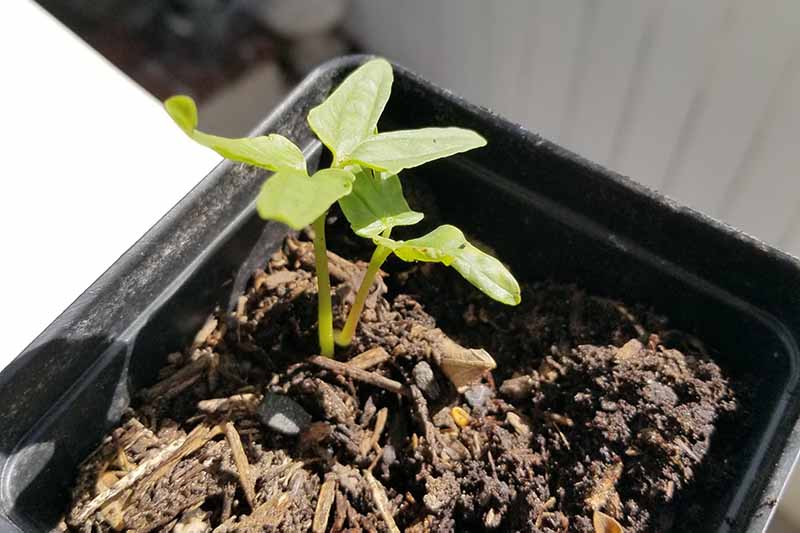
Directly sow the seeds to the desired growing area for best results because these seedlings don’t respond well to transplanting, in my experience.
Wait until two weeks after your last frost date; scuff up the seeds with a nail file and soak them in water overnight before sowing.
Lay down a thin layer of soil, half an inch at the most, and keep the area evenly watered and moist; seedlings will typically pop up after a week or two.

Watering Requirements
Water? We don’t need no stinkin’ water!
Well, maybe a little. But morning glory truly requires no special attention in regards to watering. It usually survives and thrives on whatever rainfall it can get, but it should be watered during periods of drought.
Seedlings will need regular watering and ideally you should never allow the top surface of the soil to become overly dry. But as they mature, the vines need much less water, usually subsisting off of only rain water – unless you live in a hot and dry area like the southwestern United States.
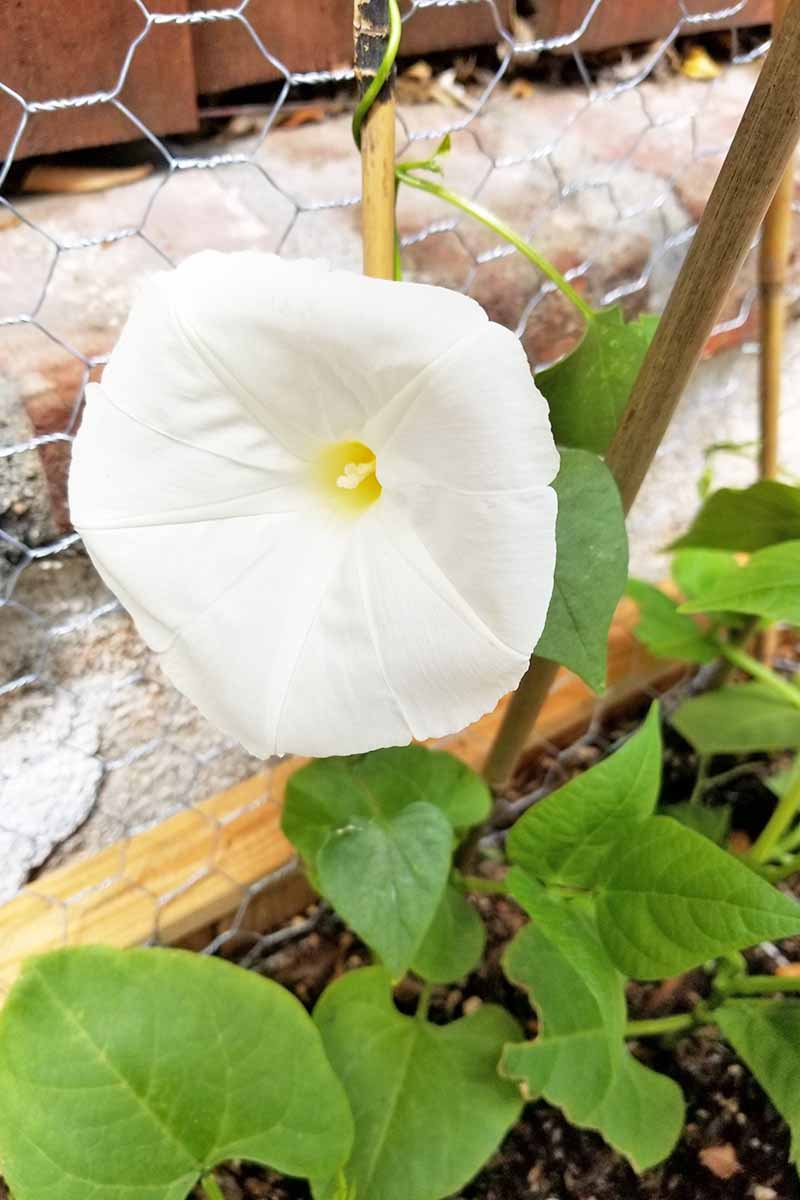
Less is more with this plant. Too much water encourages leafy growth and no flowers. Once they’re all grown up, these vines tolerate dry conditions. They will flower best when they’re not getting regular watering.
In more arid areas that receive less than an average of one inch of rain per week, you can give the vines a light weekly soaking once a week. One good drink of water per is far better than daily watering for these flowers.
Don’t be alarmed if the leaves start to dry up in the summer heat! These flowers need to be stressed to produce all of those blooms, so a few dessicated and wilted leaves are part of the game here.
Pests and Diseases
Tough as they are, you’ll find a few headaches when growing morning glories.
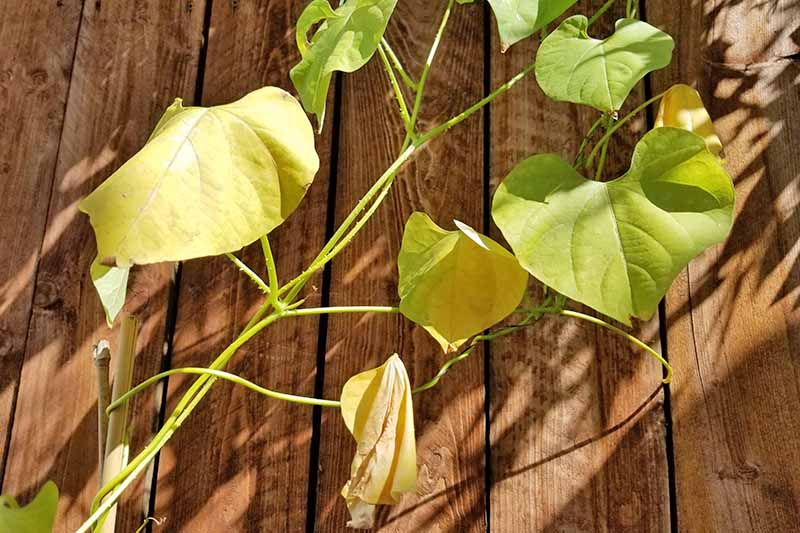
Like many plant issues, many of the potential ailments for this vine trace back to watering practices.
Morning glories will experience black rot and rust if conditions are too wet, or if air circulation is poor. Luckily you’re not watering your vines too much, right? Pow, problem solved!
If you do encounter issues with fungal problems like black rot or rust, or stem cankers in some scenarios, a copper fungicide like this one from Bonide, available via Amazon can help control the problem.

Bonide 811 Copper 4E Fungicide 16oz, available from Amazon
Quite a few bugs and insects will bother your morning glory, but rarely with serious infestations. Keep an eye out for Japanese beetles, spider mites, aphids, and leafminers.
I recommend hand picking these pests and avoiding the use of any chemical control. Too often, chemical applications will impact the health of beneficial insects and pollinators.
If you don’t see these insects, you’ll often find evidence of their presence. Japanese beetles will blindly munch away on your leaves, while aphids will suck the juices from I. purpurea and leave behind a sticky residue. Bad infestations are easily visible and should be quickly dealt with.
Leafminers will tunnel through the leaves of your plant and leave behind little silvery tunnels and trails. These aren’t much of an issue and only impact the appearance of the plant.
Spider mites are my most commonly encountered pest with I. purpurea because they thrive in the hot, dry conditions that this flowering vine loves. Besides the tiny webbing they leave behind on plants, something visually akin to a spider web, you’ll find leaves with white dots and dry, yellowing, speckled foliage.

Bonide Products INC 912102 652 Ready-to-Use Insect Soap 1 Quart, available from Amazon
An insecticidal soap works well for spider mite problems (and aphids, for that matter). Try another Bonide product like this one from Amazon for easy control.
If the leaves are becoming bleached and faded, or turning color from their natural green, and you have no evidence of insect infestation, you might be experiencing sunscald or problems with ozone or air pollution.
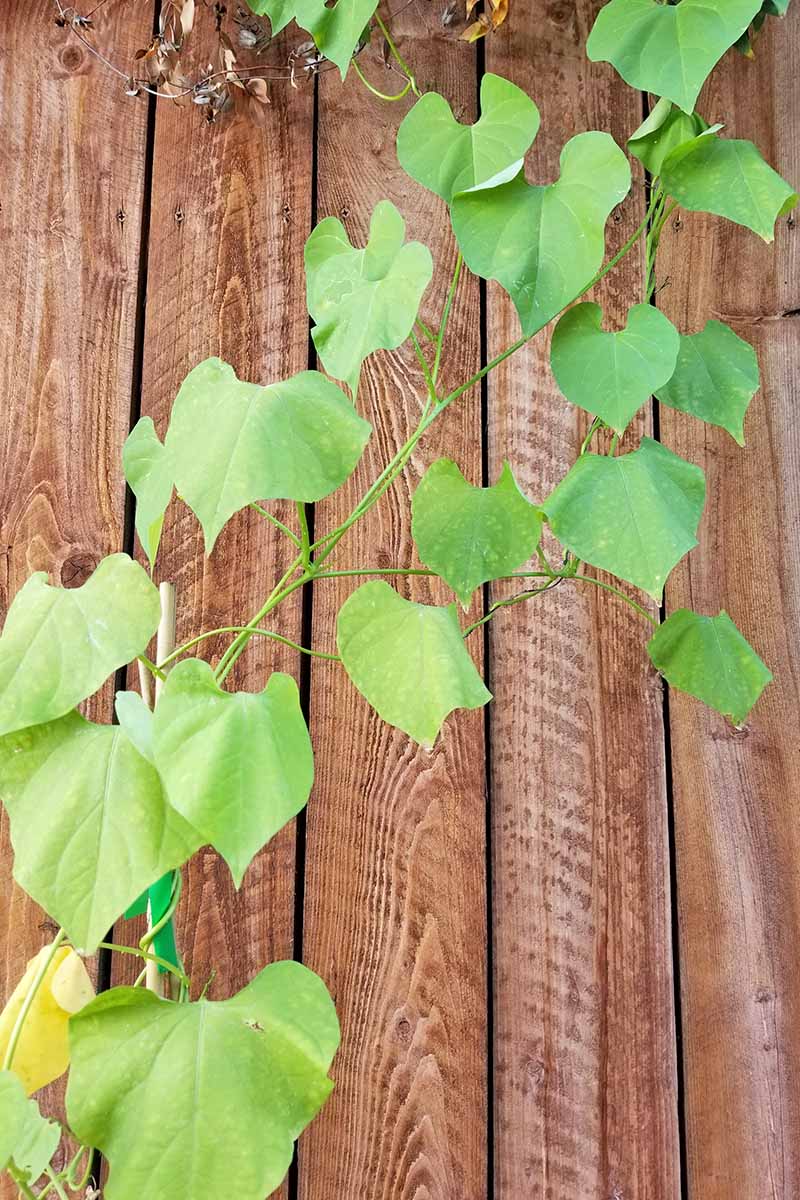
Sunscald will bleach the leaves of your vine and turn them closer to white, with brown edges. The only solution here is to provide a bit of shade from the hottest hours of the afternoon sun.
This problem most often occurs only after the plant has been moved to a new location, or perhaps if you did a little pruning in the area that resulted in new, hotter conditions for your vines. I. purpurea should recover with some shade and care!
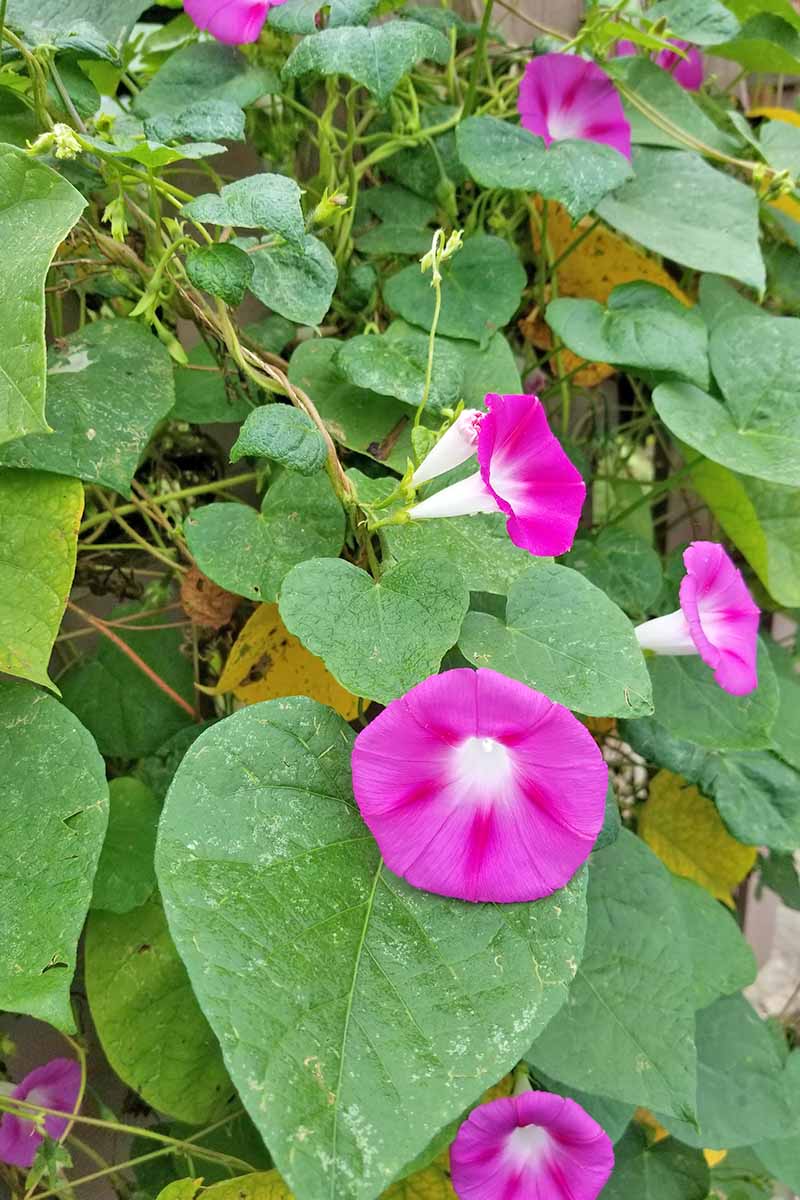
Ozone can bleach the leaves and turn the foliage a gray color that’s not very appealing, and easily recognized. Try to avoid planting your vines where they’ll get blasted by emissions and exhaust to avoid this happening.
That could mean nearby the road or street, or even in your driveway if your vehicle’s muffler is aimed at the morning glory.
Recommended Varieties
If you’re in search of that classic sky blue flower with the white and yellow center, the heirloom ‘Heavenly Blue’ is what you’re looking for. Packages of 150 seeds are available from Burpee.
For even more of our favorite varieties, be sure to check out our guide where we dig further into our 15 recommend morning glory cultivars.
Goodnight Moon, Goodnight Morning Glory
Looking for that crawling vine that’ll cover a bald space in your yard, or show off plenty of glorious color to attract second and sometimes third looks? You’ve got it right here.
If you want to get down to brass tacks, check out our guide to growing flowering vines. And if you aren’t sure morning glory is for you, consult our other suggestions in our flowering vines growing guide for northern growing zones.
Plants that thrive in poor soil are my favorites! For upright plants that will compliment your morning glories, consider:
Is this flower a mainstay of your summertime gardening display? Share your memories of growing this gorgeous plant with us in the comments below.
Thanks for reading, and check back soon for more from Gardener’s Path!
Photos by Allison Sidhu © Ask the Experts, LLC. ALL RIGHTS RESERVED. See our TOS for more details. Product photos via Bonide. Uncredited photos: Shutterstock. With additional writing and editing by Allison Sidhu.


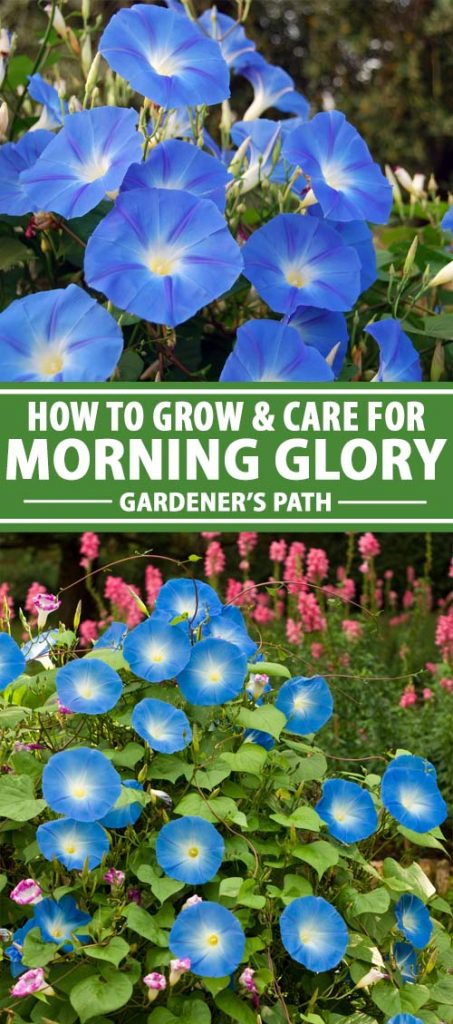
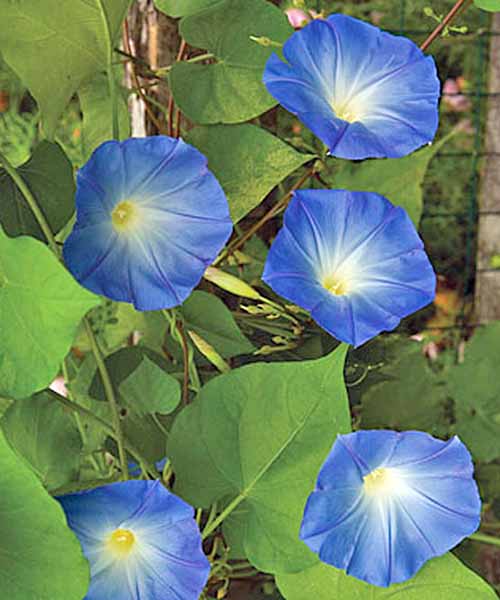


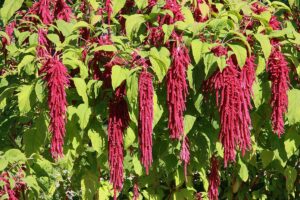
A friend of mine has a flowering vine that has flowers that look like a Heavenly Blue morning glory but it grows from a root that comes back every year. I would like to identify it but have not found anything to compare it with.
Can you send a photo, Wanda? Where are you located?
I don’t have a photo but the flower looks like a Heavenly Blue except it is a mire vivid blue
My god, why would you plant these. Morning glory are the bane of existence in many areas. They will spread to your entire yard in a single season and starve other plants of water. I would never ever plant these on purpose, and have spent years trying to get them out of my yard/garden.
It’s true that they spread and reseed easily. I’m a fan of planting them in containers on the patio for this reason – it’s easy to appreciate the flowers while controlling their spread that way.
Why won’t my morning glories bloom?
Hello Margo! There are a couple of possible explanations. First, if you planted them from seed and got a little bit of a late start, they may just need a little more time. Same if it was cold at the beginning of the growing season. Morning glories tend to begin blooming in mid- to late summer, and often will carry on into early fall. There’s also a chance they’re getting too much fertilizer. If you see lots of leaves and no buds, high-nitrogen fertilizer is often to blame. Let us know if your patience paid off! I’m keeping my fingers… Read more »
The blooms of my heavenly blue MG are turning white. Needs fertilization perhaps?
Hi Michele –
There are various reasons why this may happen. Morning glory color may change with soil pH variations. It is not unusual for Heavenly Blues to turn from blue to pink, sometimes in the same day.
However, turning from blue to white may be due to other causes. Seeds from other varieties may be have been mixed into your seed packet, and they are producing white “sports” that are becoming dominant. If the plants are otherwise healthy, this may very well be the cause.
For more information, please contact your local agricultural extension.
I planted pink and blue Morning Glories. The pink bloomed for months then pretty much stopped. I figured the blues were a dud, then they decided to bloomed…and the pink picked back up. And now…mutants! Will the seeds be mutants, too?
I planted pink and blue, but only the pink bloomed, then stopped. I was disappointed that the blue never bloomed and I though it was finished for the season so I pulled it down. Now the remnant (not attached to the vine anymore) is blooming blue. ???? Is it common to have a vine start blooming so much later?
These are better quality pics
Since morning glory reseeds readily, pollination can result in inconsistent results when the new seeds sprout. It can be fun to see the variation you get in pinks, purples, and blues! But variations in soil pH can lead to changes in morning glory bloom color as well, even over the course of a single day.
I have morning glory sprouts and one of mine has ANNOYING WHITE FLIES. What do I do to stop them from spreading?
Did you start the seeds indoors? White flies can be difficult to get rid of and I agree- they’re immensely annoying! Adding a little dish soap to a spray bottle filled with water can help to get rid of them. Be sure to spray it on all surfaces, underneath leaves and on stems as well.
I have holes & yellowing leaves. I water once a week. Help
Insufficient light can lead to yellowing, and pests can chew holes in leaves. Overwatering or watering inconsistently can also lead to foliage problems. But depending on where you are gardening, if your plants were healthy and flowering through the summer, I’d suspect they are just nearing the end of the season and beginning to decline for that reason.
Please feel free to share pictures if you like!
Thank you for all the info!!!!!!
I had a terrible problem getting rid of ivy on my fences and the ivy would eventually start pulling the fence down. Morning glories totally choked out the ivy and are easy to take care of. They are beautiful and do not harm my fences.
Why are the roots of my morning glories coming to the top of the soil?
Hi Connie =
It sounds like the soil may be eroding. Excessive rainfall may be the culprit.